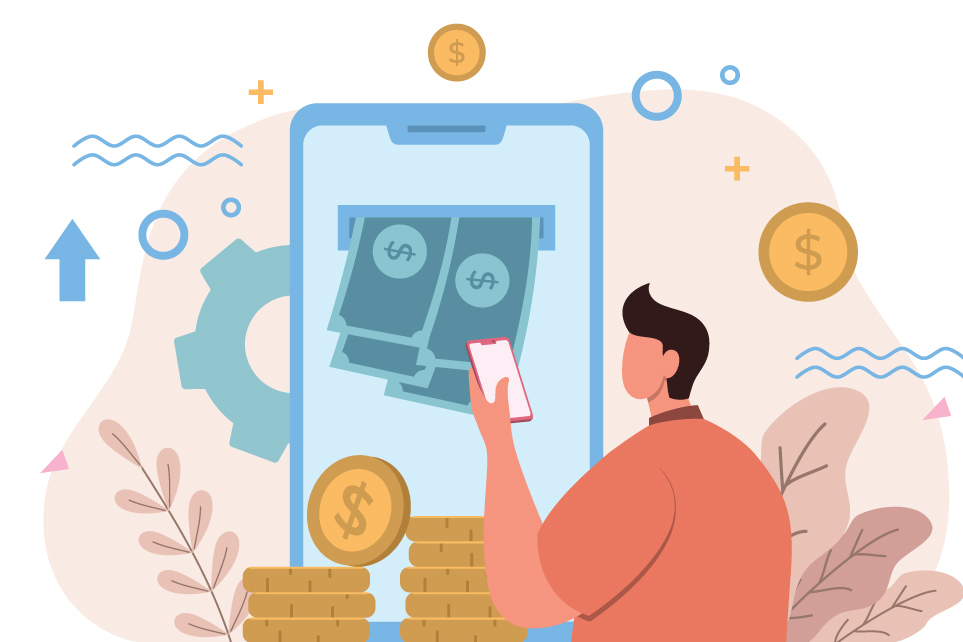These days, it seems like smartphones and other mobile devices have taken over the world. Wherever you look, people are glued to their screens. On average an individual spends 24 hours a week online. And the majority of them use smartphone applications.
Nowadays, it appears like there is an app for everything. Despite this, developers continue to come up with fresh and imaginative concepts that astound us! But, to make money from all of these applications, what does it take?
Although app monetization is a difficult endeavor, you’d be surprised at how many inventive methods developers have discovered to convert their work into profitable businesses.
What is App Monetization?
App monetization is the process of generating revenue from your app’s users. For this, several strategies are used. For every app category, there is a specific app monetization strategy that fits. Some applications concentrate on a single component of app monetization, while others cover several.
Best Mobile App Monetization Strategies
1. In-app Advertising
Digital advertising as a technique of monetization was already firmly entrenched on the World Wide Web way before the surge in sales of mobile in 2008. It was followed by the launch of the Apple App Store and Google Play Store.
This monetization approach was swiftly adapted to mobile, with banner ads needing to adapt to the smaller mobile footprint.
Since then, app banner advertisements for mobile ads have grown to include interstitial ads, video commercials, native ads, and text ads, all of which are particularly built for the mobile environment.
Pros:
- In-app advertisements keep your audience engaged in the app, resulting in higher conversions.
- Many users confuse in-app advertisements with banner ads on websites. Despite their similarities, they take distinct approaches. Furthermore, in-app advertisements outperform banner ads.
Cons:
- Despite the fact that it captivates the audience, the number of clicks is still insignificant. With a click-through rate of 0.1 percent, your banner ad is unlikely to generate much interest.
- Unknowingly, you can promote your competitors and can increase their app download rate.
2. Subscription
According to a survey, 52 percent of Product Owners who choose a subscription-based app monetization approach feel that it has benefited their business by expanding their user base and income. This mobile app monetization model allows users to download the app for free the first time they use it, but people who subscribe to additional premium services get full access.
You need to convert your users into subscribers and keep existing subscribers from churning when picking a subscription plan. To keep existing customers engaged for a long time, you must emphasize the benefits of upgrading the app to new free users and regularly give new material and features to existing subscribers.
Pros:
- It can attract a large number of free users.
- It can retain free users in the app before charging them.
Cons:
- It’s difficult to know how much free stuff to provide before attracting subscribers.
3. Freemium
Freemium applications are expected to account for about 94 percent of the market in 2021, making them the most popular app monetization technique for Android developers. This would be a good way to increase the number of users. In one app, it combines free and premium services. The application’s free version allows users to access the most basic features.
Free apps, unsurprisingly, have faster download rates since customers get to trial your software before paying for anything. The premium edition, on the other hand, allows customers to purchase premium features and content. You must find the proper balance between offering too few and too many free features.
Pros:
- It provides multiple revenue sources for mobile apps.
Cons:
- It takes a long time to make it profitable.
4. In-app Purchases
According to several studies, it was found that people spend $380 billion on in-app purchases worldwide. Users may purchase services, content, and unique features within the app using this technique. You may utilize this quantified and validated revenue statistic to earn app money by keeping the app free to download. Users make purchases in the app to enhance their experience.
Make sure this app monetization method is compatible with your user experience. Also, make it clear on your App Store page that, while your app is free, it does require in-app purchases. You may also send customized alerts based on their activity or browsing history, thank them for their purchase, notify them about time-based discounts, and more to encourage your app users to make purchases in your app.
Pros:
- This allows users to try the app before buying it, resulting in a wider user base. Users can try the app before purchasing it, leading to a larger user base
- If well planned, it can be quite profitable.
Cons:
- An app that includes in-app purchases has to pay some charges to app stores.
5. Indirect Data Monetization
Here’s when things start to get interesting. The first is data-driven optimization, which is evaluating data to get insight. These types of suggestions can help businesses operate better. To enhance sales, you can use the data to figure out how to reach out to customers and analyze their behavior. Furthermore, the data reveals where and how you may save money, reduce hazards, and assure flawless performance.
Pros:
- The data monetization method provides the advantage of a straightforward business model, making it simple to establish and build a company.
Cons:
- Many app users are still unsure about the data collection process. Thus, users refusing to share their data is quite common.
To Sum It Up
Before everything else, consider your offerings, audience, and opportunities while deciding on the best app monetization strategy for your app. At AppleTech, we have the experience and the expertise to turn your concept of a mobile app development and bring it into reality. So, we are qualified to help you out with the selection process of the app monetization strategy.

